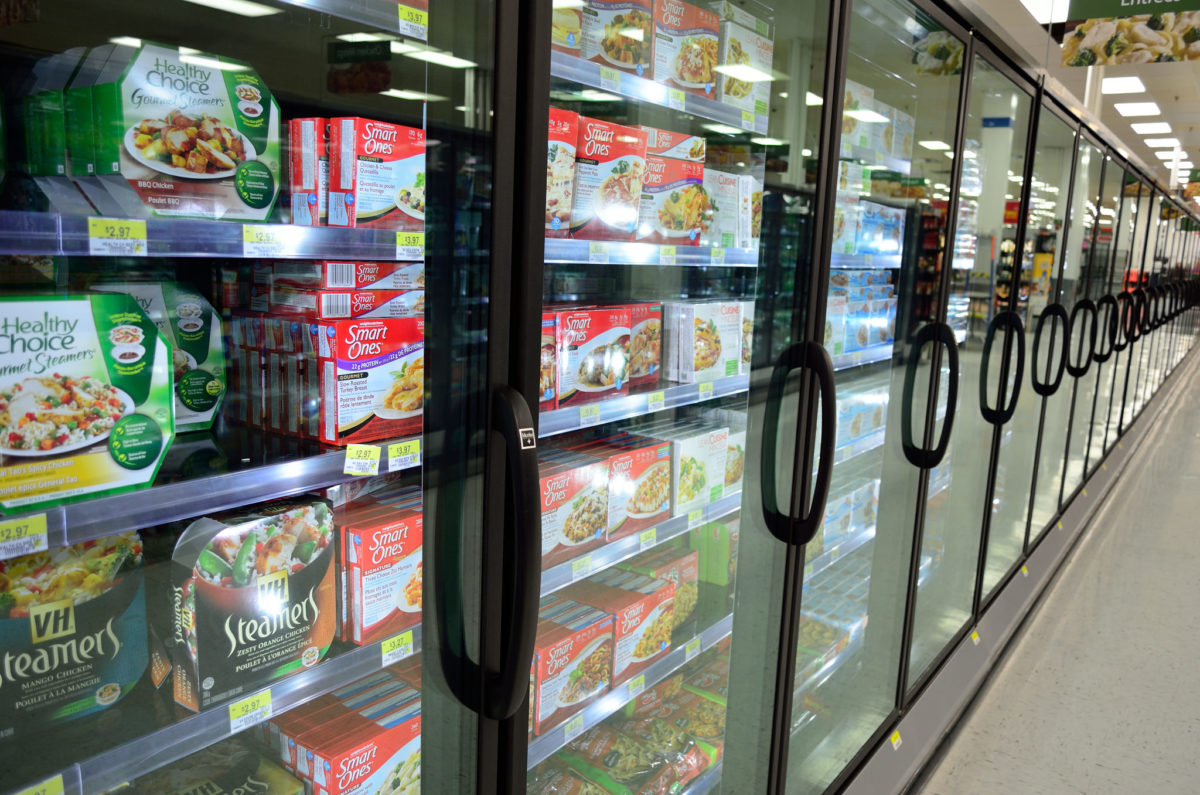The chiller aisles of hundreds of supermarkets in Europe may soon run on optimized solar power following the creation of a joint venture (JV) between SMA and Danfoss that aims at delivering solar, storage and energy management services to food retailers.
German solar inverter specialists SMA will integrate its energy management platform ennexOS with Danfoss’ System Manager SM800 under the JV, which will focus on working with supermarkets to help them integrate their cooling and refrigeration technology with PV, energy storage and more sophisticated energy monitoring platforms.
The premise of the collaboration is to accelerate the adoption of flexible and efficient renewable energy generation sources. Intelligent building design, overseen with the latest solar, storage and software technology, is key to this transition, particularly in large-scale retail sectors such as supermarkets.
E-mobility is also a longer-term aim of the JV, SMA said, which will help supermarkets to optimize their carbon footprint via more intelligent use of the power they generate onsite.
SMA’s board member for operations and technology, Jürgen Reinert, said that the company’s expertise in PV, battery storage and energy management is a “complementary fit with Danfoss’ long-standing experience in cooling and refrigeration technology.”
Popular content
Danfoss Cooling president Jürgen Fischer added, “The food retail segment is both of strategic importance and a playing field for innovation. Innovative products from cooling and heating technology combined with PV, energy storage and charging stations will be used in the supermarket of the future,” he said.
The program will be managed by SMA’s new subsidiary, coneva GmbH, and Danfoss’ Cooling Segment. Together the companies will design a service offering that is tailored specifically to the food retail segment.
SMA’s ennexOS energy management platform will be installed at supermarkets eager to optimize their energy consumption against parameters such as current electricity prices, solar irradiation levels, outside temperature and grid requirements.
“Surplus self-generated electricity can either be sold directly or stored in electric and thermal storage systems,” explained coneva general manager Jochen Schneider. “The integration into the energy market also allows us to secure the supply of cost-effective, environmentally friendly energy. In addition, we can integrate charging stations.”
This content is protected by copyright and may not be reused. If you want to cooperate with us and would like to reuse some of our content, please contact: editors@pv-magazine.com.


1 comment
By submitting this form you agree to pv magazine using your data for the purposes of publishing your comment.
Your personal data will only be disclosed or otherwise transmitted to third parties for the purposes of spam filtering or if this is necessary for technical maintenance of the website. Any other transfer to third parties will not take place unless this is justified on the basis of applicable data protection regulations or if pv magazine is legally obliged to do so.
You may revoke this consent at any time with effect for the future, in which case your personal data will be deleted immediately. Otherwise, your data will be deleted if pv magazine has processed your request or the purpose of data storage is fulfilled.
Further information on data privacy can be found in our Data Protection Policy.